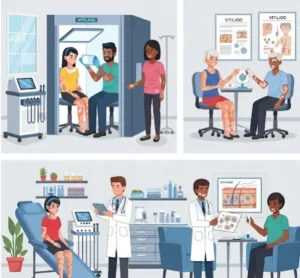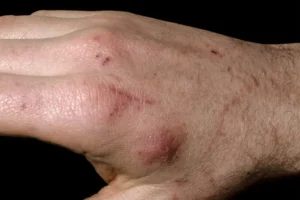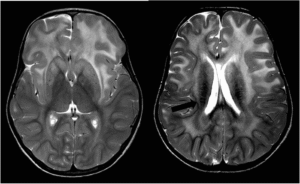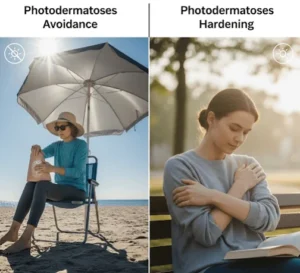Overview
Atrial Septal Defect (ASD) is a congenital heart defect characterized by a hole in the wall (septum) between the two upper chambers of the heart (atria). This condition allows oxygen-rich blood from the left atrium to mix with oxygen-poor blood in the right atrium, which can lead to increased blood flow to the lungs and over time may cause complications such as pulmonary hypertension, arrhythmias, or heart failure. In South Korea, early diagnosis and advanced treatment techniques have significantly improved outcomes for both children and adults with ASD.
What is Atrial Septal Defect?
An Atrial Septal Defect is a hole in the septum that separates the heart’s left and right atria. It is one of the most common congenital heart defects and may go unnoticed until later in life if the defect is small. Larger defects can strain the heart and lungs and usually require surgical or catheter-based intervention.
There are several types of ASDs:
- Ostium Secundum: The most common type, located in the middle of the septum.
- Ostium Primum: A lower septal defect often associated with other heart abnormalities.
- Sinus Venosus: Located near the veins that bring blood back to the heart.
- Coronary Sinus Defect: Rare type involving the coronary sinus.
Symptoms
Many children with small ASDs show no symptoms, but larger defects may cause:
- Shortness of breath, especially during exercise
- Fatigue
- Frequent respiratory infections in children
- Heart palpitations or skipped beats
- Swelling in legs, feet, or abdomen (later stages)
- Stroke (in rare adult cases due to paradoxical embolism)
Causes
- Congenital (present at birth): Occurs due to improper formation of the heart during fetal development
- Genetic factors: Sometimes associated with syndromes like Down syndrome
- Environmental factors: Maternal diabetes, smoking, or alcohol use during pregnancy may increase risk
Risk Factors
- Family history of congenital heart defects
- Certain genetic syndromes (e.g., Down syndrome)
- Maternal exposure to alcohol, drugs, or infections during pregnancy
- Diabetes or obesity in the mother
Complications
- Pulmonary hypertension (high blood pressure in the lungs)
- Heart arrhythmias
- Heart failure
- Stroke due to blood clots bypassing the lungs
- Eisenmenger syndrome (a rare, severe form of pulmonary hypertension)
Prevention
ASD cannot always be prevented, but certain steps can reduce the risk:
- Regular prenatal care during pregnancy
- Managing maternal health conditions (e.g., diabetes)
- Avoiding alcohol, smoking, and harmful medications during pregnancy
- Genetic counseling if there’s a family history of congenital defects
Treatment Options in Korea
South Korea offers world-class pediatric and adult cardiology care, with advanced diagnostic imaging, minimally invasive techniques, and specialized surgical expertise. Major hospitals such as Seoul National University Hospital, Asan Medical Center, and Samsung Medical Center provide comprehensive ASD management.
1. Diagnosis
- Echocardiogram (Transthoracic or Transesophageal): Main diagnostic tool to visualize the defect
- Electrocardiogram (ECG): To detect abnormal heart rhythms
- Chest X-ray: To observe heart and lung condition
- Cardiac MRI or CT: For detailed structural evaluation
- Cardiac catheterization: In complex cases or before closure procedures
2. Monitoring (Small Defects)
- Some small ASDs close on their own, especially in children
- Regular monitoring by pediatric or adult cardiologists
- No treatment required if there are no symptoms and no heart enlargement
3. Medical Management
- Not curative but may be used to treat symptoms (e.g., diuretics for fluid buildup, medications for arrhythmia)
- Anticoagulants may be prescribed in adults to prevent clot-related complications
4. Catheter-Based Closure
- Transcatheter device closure is commonly used in Korea for ostium secundum-type ASDs
- A closure device (e.g., Amplatzer) is inserted via a catheter through the groin
- Performed under general anesthesia or sedation
- Minimal recovery time, often discharged the next day
5. Surgical Closure
- Required for large, complex, or non-secundum ASDs
- Open-heart surgery using a heart-lung machine
- Closure with sutures or a synthetic patch
- Excellent outcomes with low complication rates in Korean tertiary hospitals
6. Post-Treatment Care
- Short-term use of anticoagulants or aspirin
- Antibiotics before dental procedures for six months post-closure
- Annual follow-up visits with echocardiography
- Lifestyle counseling and physical activity guidance for growing children













